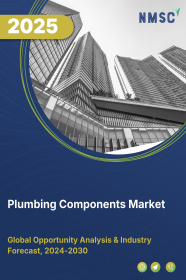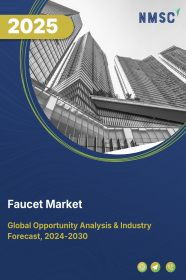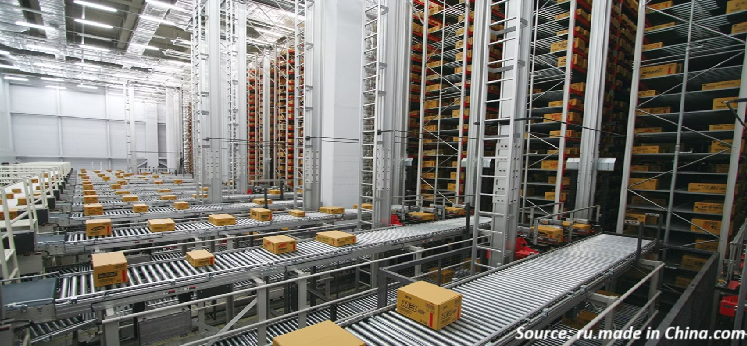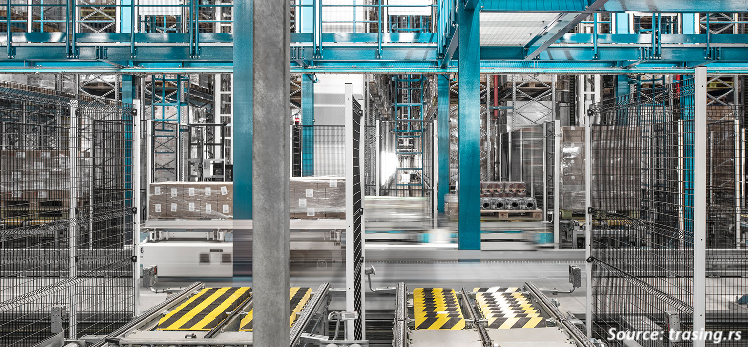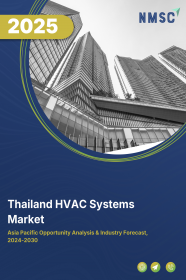
Thailand HVAC Systems Market by Equipment (Cooling Equipment, Heating Equipment, and Ventilation), by Implementation Type (New Construction and Retrofit), and by End User (Residential, Commercial, and Industrial) - Opportunity Analysis and Industry Forecast, 2024– 2030
Industry: Construction & Manufacturing | Publish Date: 28-Jan-2025 | No of Pages: 152 | No. of Tables: 117 | No. of Figures: 62 | Format: PDF | Report Code : CM1950
US Tariff Impact on Thailand HVAC Systems Market
Trump Tariffs Are Reshaping Global Business
Market Definition
The Thailand HVAC System Market size was valued at USD 1.58 billion in 2023, and is predicted to reach USD 2.90 billion by 2030, at a CAGR of 8.5% from 2024 to 2030.
HVAC (Heating, Ventilation, and Air Conditioning) refers to the technology and systems used in buildings to regulate indoor environmental conditions such as temperature, humidity, and air quality to ensure comfort and safety for occupants. Heating systems provide warmth during colder months, ventilation systems circulate and replenish indoor air, and air conditioning systems cool and dehumidify indoor air during warmer months.
HVAC systems offer several advantages, including improved occupant comfort and health, increased energy efficiency leading to cost savings, better indoor air quality through filtration and ventilation, precise temperature control for enhanced productivity in commercial settings, and protection of building infrastructure from extreme weather conditions. Additionally, these systems can be designed to meet specific requirements, contributing to sustainability goals by reducing carbon emissions and promoting eco-friendly practices in building operations.
Environmental Concerns Drive Growth in the HVAC Systems Industry
The HVAC systems industry is experiencing significant growth driven by environmental imperatives. With increasing concerns about climate change, air quality, and ozone layer depletion, there is a growing emphasis on sustainable practices and regulatory compliance. Governments worldwide are implementing policies to reduce the environmental impact of HVAC systems, leading to the development and adoption of eco-friendly technologies.
Moreover, environmental considerations are instrumental in shaping the trajectory of the HVAC systems market. Heightened awareness of issues such as climate change, air quality degradation, and ozone layer depletion has underscored the need for sustainable practices and regulatory oversight. Governments worldwide are enacting legislation to mitigate the environmental impact of HVAC systems, fostering innovation in eco-friendly technologies.
Increasing Energy-Saving Regulations Drives the HVAC System Market
The introduction of residential energy-saving regulations serves as a catalyst for growth in the HVAC system market. These regulations propel market expansion by mandating the adoption of more energy-efficient systems, compelling manufacturers to develop compliant HVAC units.
Consequently, consumers are motivated to invest in energy-efficient HVAC systems to fulfill regulatory obligations and minimize energy expenses. Additionally, these regulations enhance homeowners' awareness of the advantages of energy-efficient HVAC systems, resulting in heightened demand for such products.
This heightened demand stimulates manufacturers to innovate and broaden their product offerings to cater to the burgeoning market demands, thereby intensifying the demand for energy-efficient HVAC systems.
Price Volatility of Raw Materials Restrains the Growth of the HVAC system Market
Raw material expenses are on the rise owing to inflation and disruptions in the supply chain, adversely impacting the manufacturing costs of HVAC systems. The escalation in costs for essential raw materials such as steel, copper, and aluminum notably inflate production expenses for HVAC manufacturers.
Consequently, small and medium-sized HVAC firms face margin pressures, which hamper profitability and impede investments in research and development. This serves as a restraint on market growth.
IoT Integration Creates Ample Opportunities for the HVAC System Market
The incorporation of Internet of Things (IoT) technology represents a significant market opportunity for the HVAC industry. This integration leads to remote control functionalities, enhanced energy efficiency, and predictive maintenance solutions. By incorporating IoT devices and sensors into HVAC systems, users gain the ability to remotely monitor and adjust settings, optimize energy consumption, and proactively address maintenance issues before they escalate.
This advancement improves user experience and comfort, lowers energy costs, and extends the lifespan of HVAC equipment. As the demand surges for smarter and more efficient buildings, surpassing the capabilities of current infrastructure, the implementation of IoT integration is poised to create ample opportunities within the HVAC system market.
Competitive Landscape
The market players operating in the Thailand HVAC System market include Carrier Global Corporation, Daikin Industries Ltd., Gree Electric Appliances Inc., Johnson Controls International Plc., Panasonic Holdings Corporation, LG Electronics Inc, Trane Technologies Plc., Honeywell International Inc., Mitsubishi Electric Corporation, Samsung Electronics Co., Ltd., Watts, Toshiba Corporation, Siemens AG, Electrolux, AIREDALE INTERNATIONAL AIR CONDITIONING LTD., and others.
Thailand HVAC System Market Key Segments
By Equipment
-
Cooling Equipment
-
Unitary Air Conditioners
-
Variable Refrigerant Flow Systems (VRF)
-
Chillers
-
Room Air Conditioners
-
Coolers
-
Cooling Towers
-
-
Heating Equipment
-
Heat Pumps
-
Furnaces
-
Unitary Heaters
-
Boilers
-
-
Ventilation
-
Air-handling Units (AHUs)
-
Air Filtration Systems
-
Ventilation Fans
-
HRVs & ERVs
-
Air Purification Systems
-
Others
-
By Implementation Type
-
New Construction
-
Retrofit
By End User
-
Residential
-
Commercial
-
Industrial
REPORT SCOPE AND SEGMENTATION:
|
Parameters |
Details |
|
Market Size in 2023 |
USD 1.58 Billion |
|
Revenue Forecast in 2030 |
USD 2.90 Billion |
|
Growth Rate |
CAGR of 8.5% from 2024 to 2030 |
|
Analysis Period |
2023–2030 |
|
Base Year Considered |
2023 |
|
Forecast Period |
2024–2030 |
|
Market Size Estimation |
Billion (USD) |
|
Growth Factors |
|
|
Companies Profiled |
15 |
|
Market Share |
Available for 10 companies |
|
Customization Scope |
Free customization (equivalent up to 80 working hours of analysts) after purchase. Addition or alteration to country, regional, and segment scope. |
|
Pricing and Purchase Options |
Avail customized purchase options to meet your exact research needs. |
KEY PLAYERS
-
Carrier Global Corporation
-
Daikin Industries Ltd.
-
Gree Electric Appliances Inc.
-
Johnson Controls International Plc.
-
Panasonic Holdings Corporation
-
LG Electronics Inc
-
Trane Technologies Plc.
-
Honeywell International Inc.
-
Mitsubishi Electric Corporation
-
Samsung Electronics Co., Ltd.
-
Watts
-
Toshiba Corporation
-
Siemens AG
-
Electrolux
-
AIREDALE INTERNATIONAL AIR CONDITIONING LTD.

















 Speak to Our Analyst
Speak to Our Analyst




